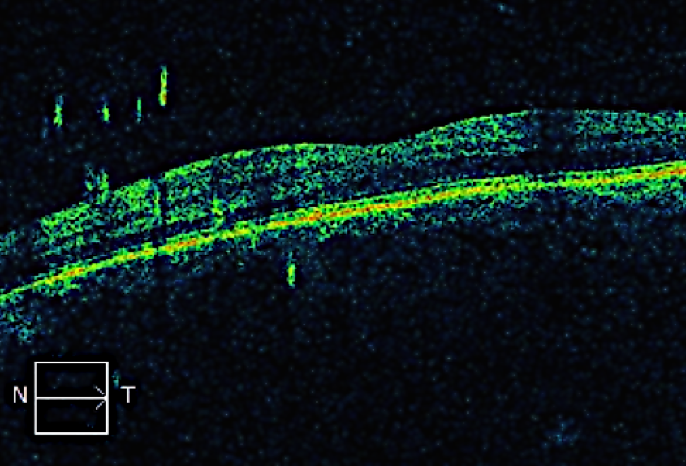
63-year-old man with clinically visible asteroid hyalosis.
A Clear Vision for Professional Development

63-year-old man with clinically visible asteroid hyalosis.

60-year-old man with an embolic BRAO. There was typical retinal whitening on clinical examination. The OCT demonstrates the area of the occlusion with an abrupt transition from the normal to abnormal retina. While not always required, the OCT can prove to be nearly pathognomonic in challenging cases.
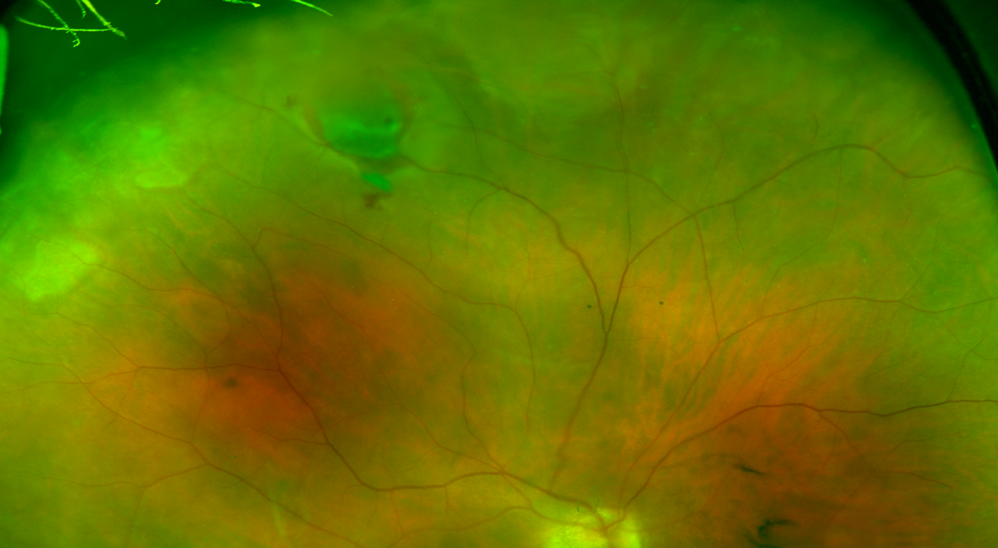
56-year-old man with a horseshoe retinal tear following a spontaneous posterior vitreous detachment.
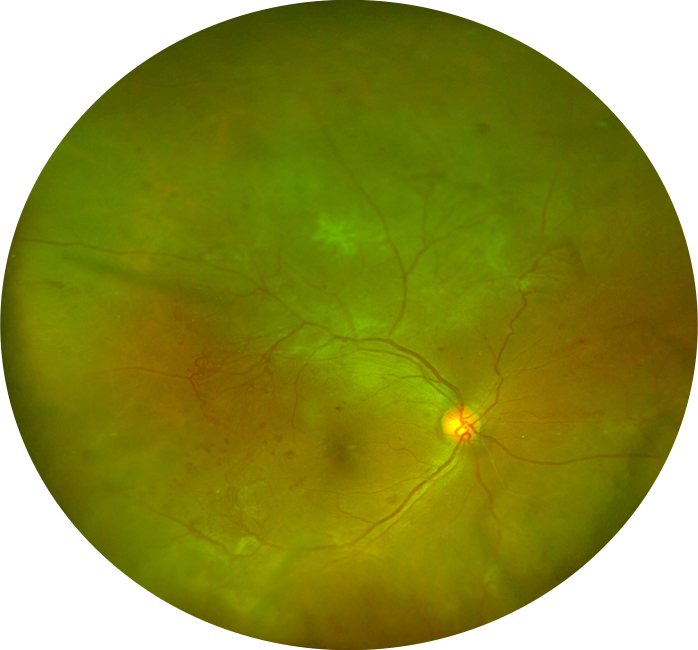
39-year-old man with multiple large areas of neovascularization secondary to diabetic retinopathy.
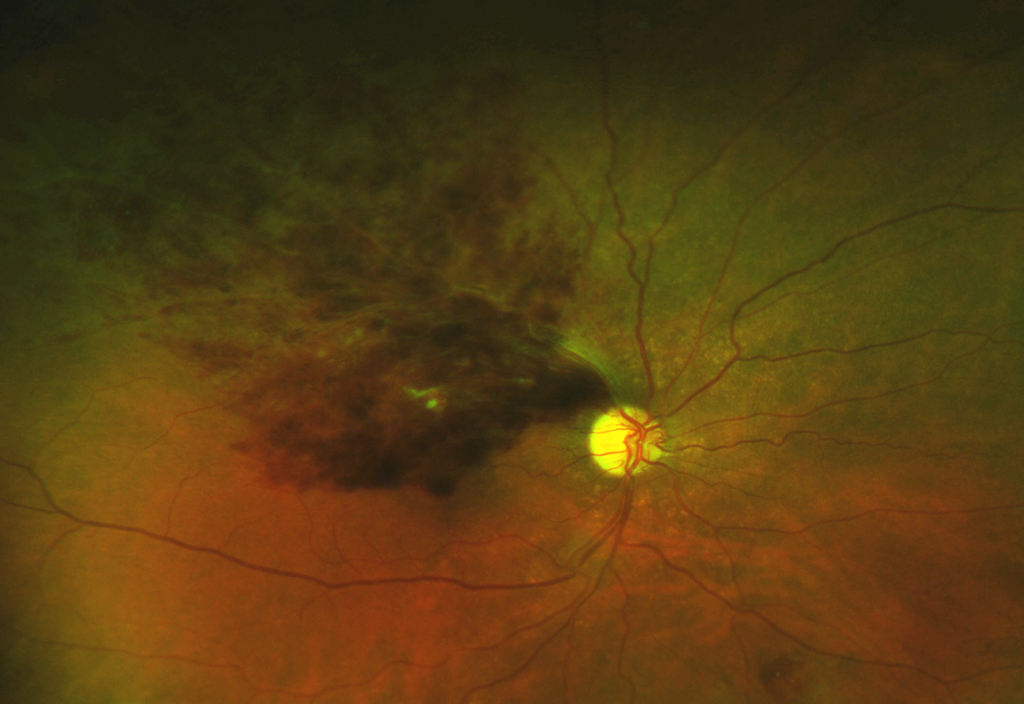
58-year-old woman with obvious macular blood and retinal thickening.
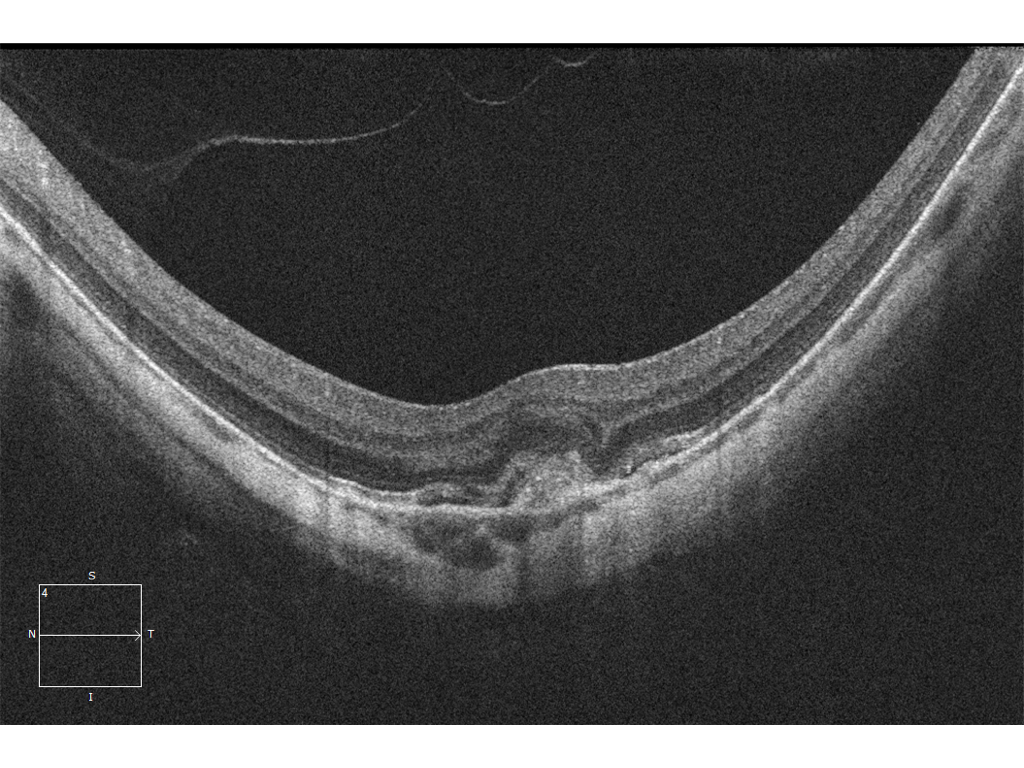
42-year-old woman with choroidal neovascularization secondary to myopia.
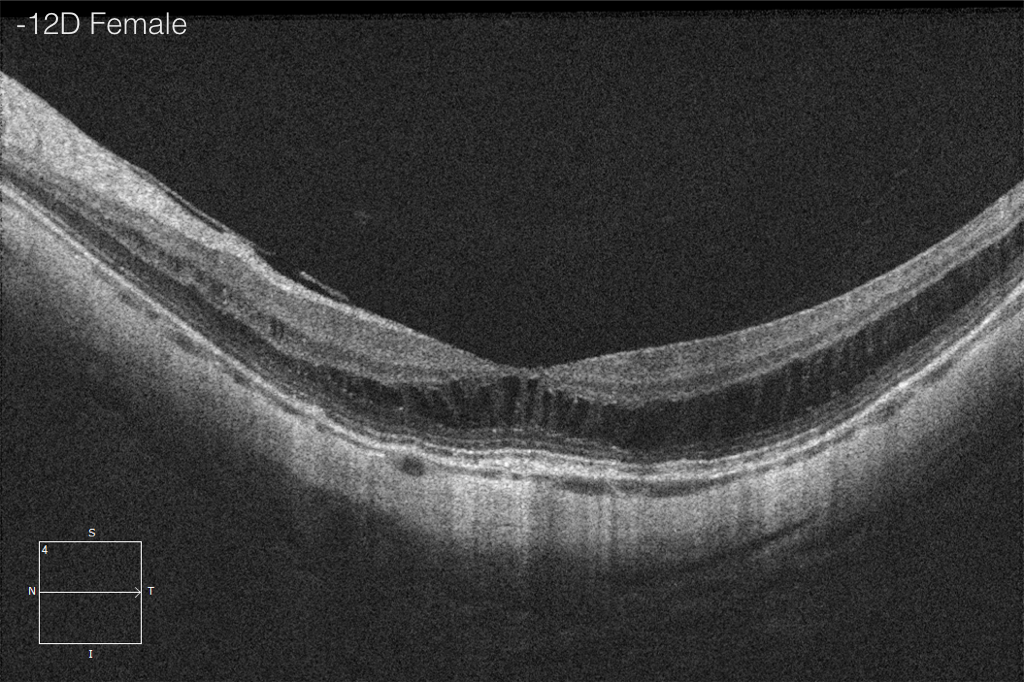
40-year-old woman with high myopia (-12 diopters).

75-year-old man with large central drusen noted clinically.
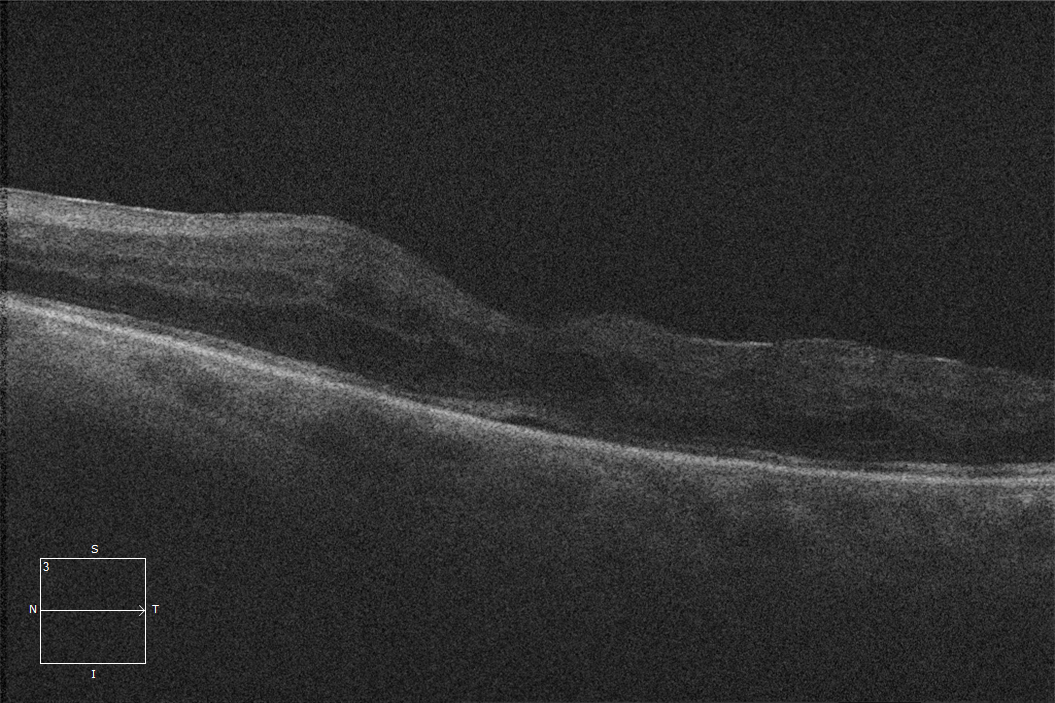
Diabetic Macular Edema. 75-year-old man with chronic center-involving diabetic macular edema (DME) and a history of anti-VEGF and intravitreal triamcinolone injections. The patient developed a prominent posterior subcapsular cataract (PSCC) that limited the view to the macula. Despite the low-quality OCT signal, the DME is clearly present along with a component of subretinal fluid. Cataract… Read More
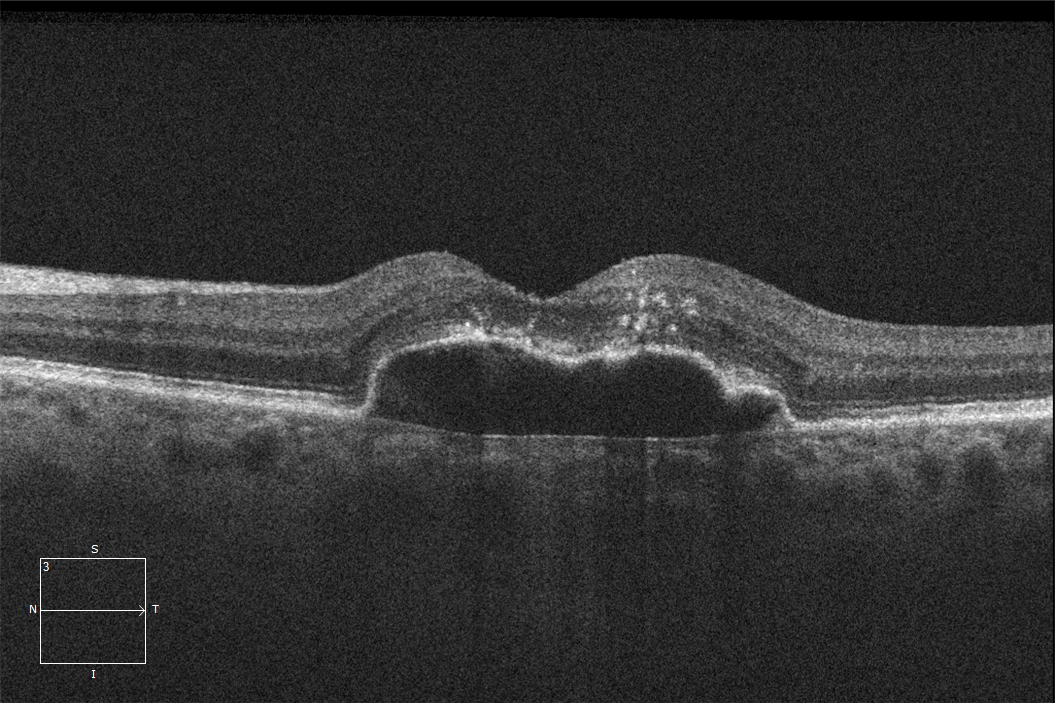
Serous Pigment Epithelial Detachment. 85-year-old female with a large pigment epithelial detachment. Fluorescein angiography did not reveal a choroidal neovascular membrane, and the patient was followed without treatment. After 1 year of follow-up the patient has remained stable without progression.

Wet Age-Related Macular Degeneration. 65-year-old man with choroidal neovascularization as evidenced by subretinal hyperreflective material and subretinal fluid. The back portion of the vitreous (hyaloid) can be seen partially detached. This is a normal finding and should not be confused with vitreomacular traction. Only one treatable pathology is present: wAMD.
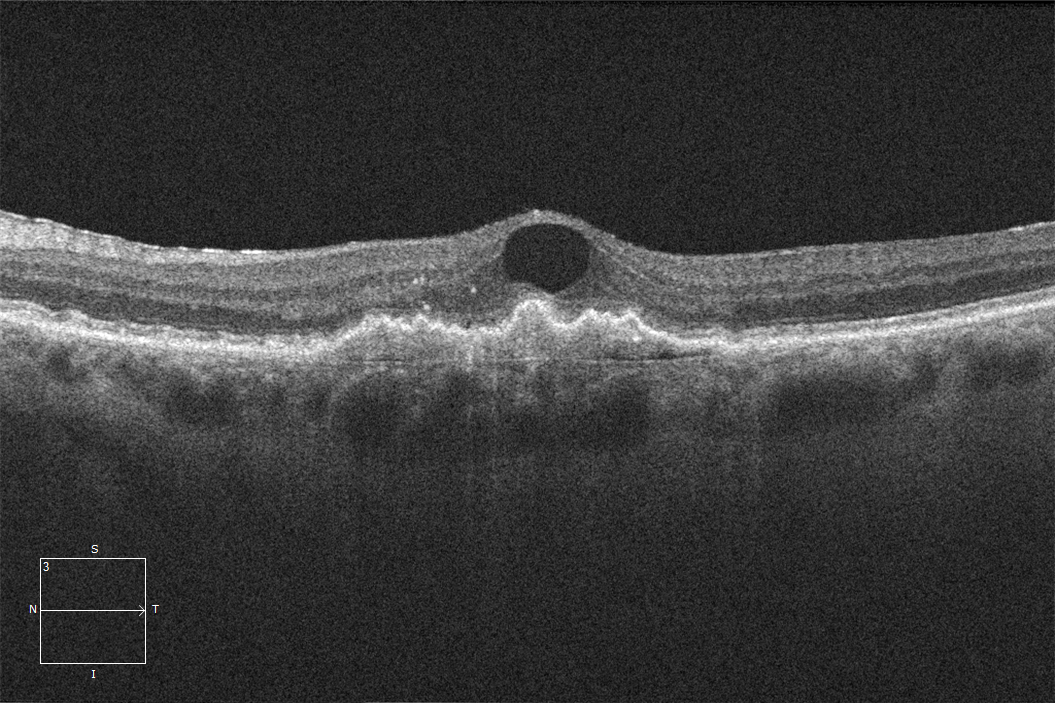
Cystoid Fluid. Both patients have cystoid fluid in the macula. Both patients are receiving anti-VEGF injections every 2 months. The OCT can be used to distinguish these pathologies as the patient with wAMD has deep drusen that are absent in the patient with a CRVO. Assessing all the factors on an OCT can be helpful… Read More
EyeCarePD Inc.
All Rights Reserved
By using this site you agree
to our Terms and Conditions.